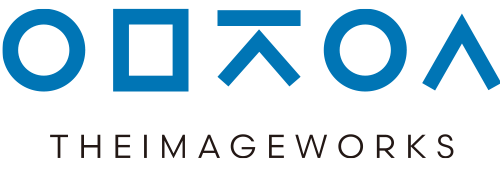.png)
Font Design
Custom typography and font design for distinctive brand communication
폰트 제작 환경의 변화에 따라 폰트를 만들어내는 과정 역시 꾸준히 발전하고 있습니다. 과거에는 제한된 도구와 기술로 인해 단순한 형태의 글꼴 제작에 머물렀지만, 오늘날에는 디지털 디자인 툴과 벡터 기반의 정밀한 곡선 조정, 자동 힌팅, 멀티마스터 기술 등 첨단 제작 시스템을 통해 훨씬 정교하고 유연한 글꼴 개발이 가능해졌습니다. 작업은 주로 완성형(Precomposed Character Set) 방식을 기반으로 진행되며, 이는 한글의 자모를 결합해 완성된 음절 단위로 디자인하는 체계입니다. 이를 통해 한글 2,350자 이상의 기본 문자뿐 아니라, 영문 폰트, 숫자, 특수문자, 그리고 자주 사용되는 한자까지 폭넓게 포함하여 다양한 매체 환경에서도 통일감 있고 균형 잡힌 타이포그래피를 구현할 수 있습니다. 또한 최근에는 웹폰트와 가변 폰트(Variable Font) 기술이 확산되면서, 한 가지 폰트 파일 안에서 두께·너비·기울기 등을 자유롭게 조정할 수 있게 되어 다양한 화면 해상도와 플랫폼에서도 일관된 가독성과 시각적 완성도를 유지할 수 있습니다. 이러한 발전은 폰트를 단순한 ‘문자의 형태’가 아닌, 브랜드 정체성과 감성을 표현하는 중요한 디자인 자산으로 자리잡게 만들고 있습니다.
As font production environments have evolved, the process of creating typefaces has also continued to advance. In the past, the limited availability of tools and technology restricted designers to producing relatively simple letterforms. Today, however, with the development of digital design tools, vector-based precision editing, auto-hinting, and multi-master technologies, the creation of fonts has become far more sophisticated and flexible than ever before. The design process is primarily based on the precomposed character system, which involves constructing complete Hangul syllables from individual consonant and vowel components. This approach ensures a consistent visual structure across more than 2,350 core Hangul characters, along with Latin alphabets, numerals, punctuation marks, and commonly used Chinese characters. As a result, a single font family can maintain visual harmony across print and digital media alike. Moreover, with the rise of web fonts and variable font technology, designers can now control parameters such as weight, width, and slant within a single font file. This allows for greater adaptability across different screen resolutions and platforms while preserving readability and aesthetic integrity. Through these continuous advancements, fonts are no longer seen merely as “letter shapes,” but as essential design assets that embody a brand's identity and emotional tone.
새로운 폰트 개발
누구나 한 번쯤은 나만의 글자체를 만들어보고 싶다고 생각한 적이 있을 것입니다. 폰트에 관심은 많지만 제작 과정을 잘 모르는 분들, 혹은 폰트 제작의 전 과정을 자세히 알고 싶은 분들을 위해 폰트 제작 프로세스를 소개합니다.
Everyone has, at least once, imagined creating their own unique typeface. For those interested in fonts but unfamiliar with the process—or those who simply want to understand how a typeface is built—this section introduces the complete font production workflow.
폰트 제작 프로세스
폰트 제작은 기본적으로 체계적인 프로세스로 구성되어 있으며, 기업 전용 폰트의 경우 또 다른 방식으로 개발됩니다. 사용자 환경과 제작 기술이 발전함에 따라 제작 방식 또한 진화하고 있습니다. 초기 단계에서는 완성형과 조합형 모두 유사한 과정을 거치지만, 이후에는 각기 다른 방향으로 전개됩니다. 여기서는 완성형 폰트를 기준으로 한 제작 과정을 다룹니다.
Font creation follows a structured process, with corporate fonts often developed through specialized methods. As both user environments and production technologies evolve, so too does the process of making fonts. While the early stages of complete-character and compositional systems are similar, they diverge later on. Here, we focus on the complete-character method for developing a full typeface.
컨셉 설정
폰트를 만들기 전 가장 먼저 해야 할 일은 명확한 컨셉을 잡는 것입니다. 디지털 매체, 인쇄물, 간판 등 다양한 환경에서 폰트가 사용되는 만큼, 용도와 매체에 따라 질감과 크기, 가독성, 분위기를 고려해 디자인 방향을 설정해야 합니다.
The first and most important step is to establish a clear concept. Since fonts are used across various media—digital displays, printed materials, signage—the design direction must consider tone, readability, and purpose for each environment.
자료 조사
정해진 컨셉에 맞춰, 해당 분위기에 어울리는 기존 폰트나 로고타입, 해외 서체 등을 종합적으로 수집해 참고합니다.
Based on the chosen concept, designers gather references such as existing fonts, logotypes, and foreign typefaces that fit the intended visual tone.
기본 글자 샘플 디자인
대표적인 자음과 모음을 포함한 5~10자의 단어를 선정해 다양한 스타일로 실험합니다. 이 단계에서 서체의 형태, 질감, 균형, 기준선, 세리프 유무, 무게중심 등이 결정됩니다.
A small group of representative characters (about 5-10) is drawn first to explore visual style. At this stage, decisions are made regarding shape, texture, weight, alignment, serif usage, and visual balance.
문장 구성 및 확장 작업
20~30자 정도의 문장을 만들어 전체적인 조화를 확인합니다. 여백, 글자 간 간격, 균형감 등을 점검하며 서체의 개성과 통일성을 다듬습니다.
A 20–30 character sentence is created to check consistency across spacing, rhythm, and proportional balance. This ensures that the typeface retains both individuality and uniformity.
파생 글자 작업
대표 글자를 기준으로 구조가 복잡한 글자들을 추가 제작합니다. 초성·중성·종성의 다양한 조합을 테스트하며, 균형과 안정감을 유지하도록 수정합니다.
From the core characters, more complex glyphs are designed. Designers refine the structure and maintain balance across different consonant and vowel combinations.
전체 글자 디자인 완성
KS5601 코드 기준 2,350자를 통일감 있게 완성합니다. 숙련된 디자이너라도 한 달 이상의 시간이 소요될 정도로 인내와 집중력이 필요한 과정입니다.
Using the KS5601 standard, 2,350 characters are systematically produced for consistency. Even for experienced designers, this step can take over a month and demands patience and precision.
테스트 및 보정
TTF(트루타입 폰트)를 생성해 실제 문장으로 테스트합니다. 글자 간의 간격, 크기, 굵기, 세리프, 맺음, 곡선 등을 세밀하게 수정하며 완성도를 높입니다.
A TTF (TrueType Font) file is generated for real-world testing. Spacing, stroke weight, serif details, and curvature are adjusted for optimal readability and visual harmony.
영문·숫자·특수문자 디자인
한글 폰트와 어울리는 영문, 숫자, 기호, 특수문자 등을 함께 디자인하여 전체 서체의 일관성을 유지합니다.
Matching English letters, numbers, and special symbols are designed to maintain a cohesive overall type system.
최종 검수 및 조판 테스트
한 벌의 폰트를 완성한 뒤 자간, 행간, 크기 등을 조정하고 테스트 인쇄를 통해 최종 보정합니다. 특히 본문용 폰트의 경우 작은 크기에서도 균일한 가독성과 세리프 표현이 유지되도록 검수합니다.
The completed font undergoes final kerning and line-spacing adjustments, followed by print testing for validation. For text fonts, particular care is taken to ensure clarity and serif consistency even at small sizes.

.png)